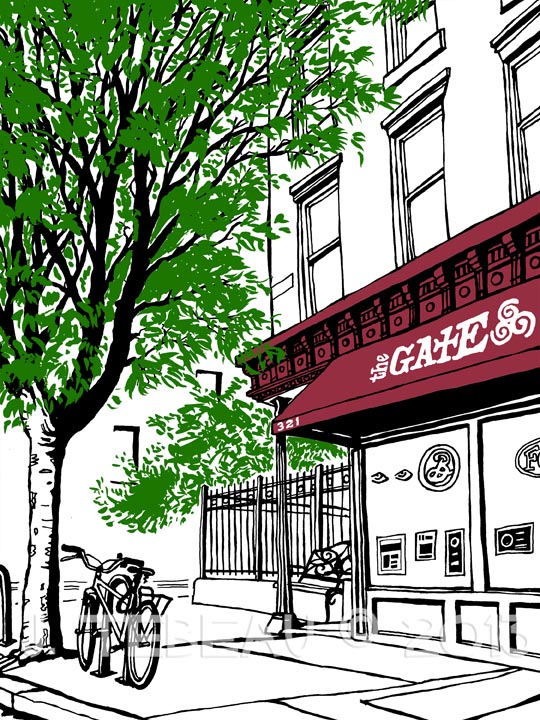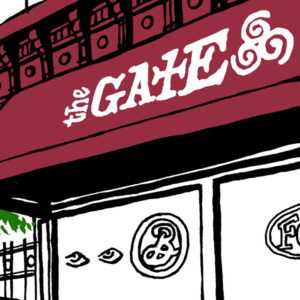
The Gate is part of a series of tidbits from the chapters of my book Bars, Taverns and Dives New Yorkers Love, published by Rizzoli. You can order it from Powell’s, Amazon, Rizzoli, and Barnes & Noble. Signed prints of all the bars in the book are available here.
The Gate was one of the very first bars I ever went to in Brooklyn, back in May 2002, before I had even moved here. I was visiting my beer-loving friends Washburn and the Swordfish, who lived in Brooklyn, in Prospect Heights, before any of us were married or domesticated. Most of the visit was walking around and drinking beer, and I could barely keep up with these guys. They were like beer-drinking machines, but I tried. It was late spring and every day was sunny and 70-some degrees, so why not?
At some point, we trekked down Fifth Avenue in Park Slope and landed at The Gate, grabbing a table in the sun on that fine patio. I didn’t want to move, partly because I was beat from walking (anyone from a car-town who’s ever visited New York knows what I mean), and partly because after you’re 1.5 beers into a situation like that—sitting in the sun with friends, surrounded by a happy crowd doing exactly same thing—well, why would you? The Gate is tailor-made for afternoons like that.
A Little History about The Gate
If you look across Fifth Avenue, all the way over to the other side of Washington Park, you’ll see a little old stone house, known as—whoda thunk?—the Old Stone House. In August 1776, world history changed right there. A couple hundred American soldiers from Maryland held off an advancing force of 2,000 British redcoats in the first major battle of the American Revolution, the Battle of Brooklyn. Most of the Marylanders were wiped out, but they fought like lions, giving George Washington and his men to the west enough time to retreat to Manhattan to fight another day. “From here to the Gowanus Canal is a Revolutionary War boneyard,” says Bobby Gagnon, owner of The Gate. In fact, one of The Gate’s Park Slope neighbors once found skeletal remains behind the house while digging in his backyard. “Marylander’s bones,” according to Gagnon.

